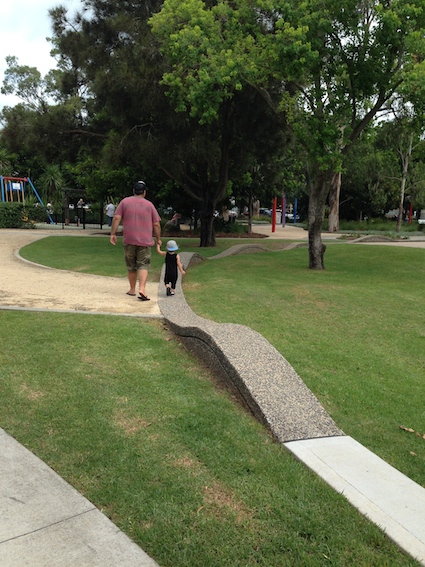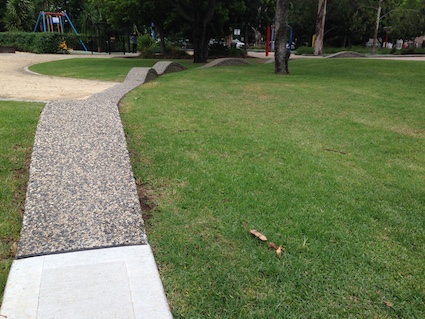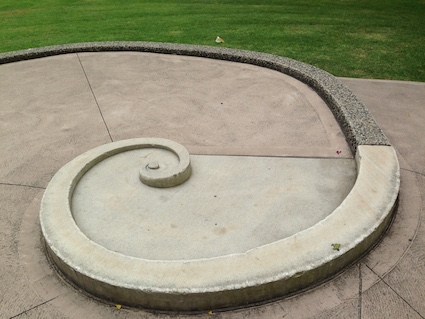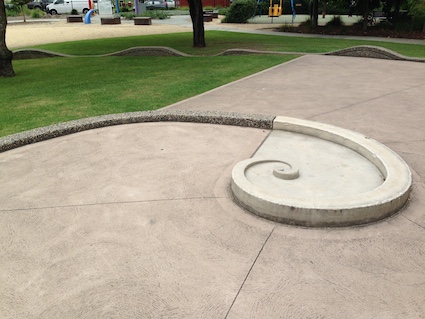
At the Macquarie Lake Variety Playground, there is a performance space which is intriguingly mathematical. From a distance, it just looks like a wavy wall – cute in a wall-ish, playful sort of way. After all, walking along a wall is a popular activity and this wavy-curvy wall is suitably low enough to entice little children and their parents too.

As you move into the centre of the spiral, two things happen. First the broad wall becomes increasingly narrow and the waves disappear.

Second, the spiral gets smaller and smaller, until it disappears.

This feature is intriguing. It feels so balanced and proportionate, I am keen to know if it is a Golden Spiral. By this I mean a spiral that is based upon the Golden Ratio as its growth factor.

So when I look at a feature like this, my mind likes to ask, “What possibilities does this give me for working with a class?” The obvious challenge here is for an older class – upper primary or secondary age… how can we create an accurate representation of a golden spiral in our playground? This is a tough wee problem to solve. Steps in thinking and experimenting may include:
- What is a golden spiral?
- What examples of golden spirals may we find both in nature and in the built environment?
- How is it constructed? Can we do this using paper and pencil?
- What adaptations would be needed to create one outside.
- What equipment may help – chalk, tape, rope, a measurement system and if so what?
- What have we learned from our investigations?
- What maths really helps in completing this tasks and what do we need to know more about?
This blog post was originally published in March 2015.






























Looks like yes. Here is a diagram to help you measure and calculate your spiral. http://www.pixelalley.com/tips_and_tuts/golden_ratio.gif
Thank you! That’s a really clear diagram.